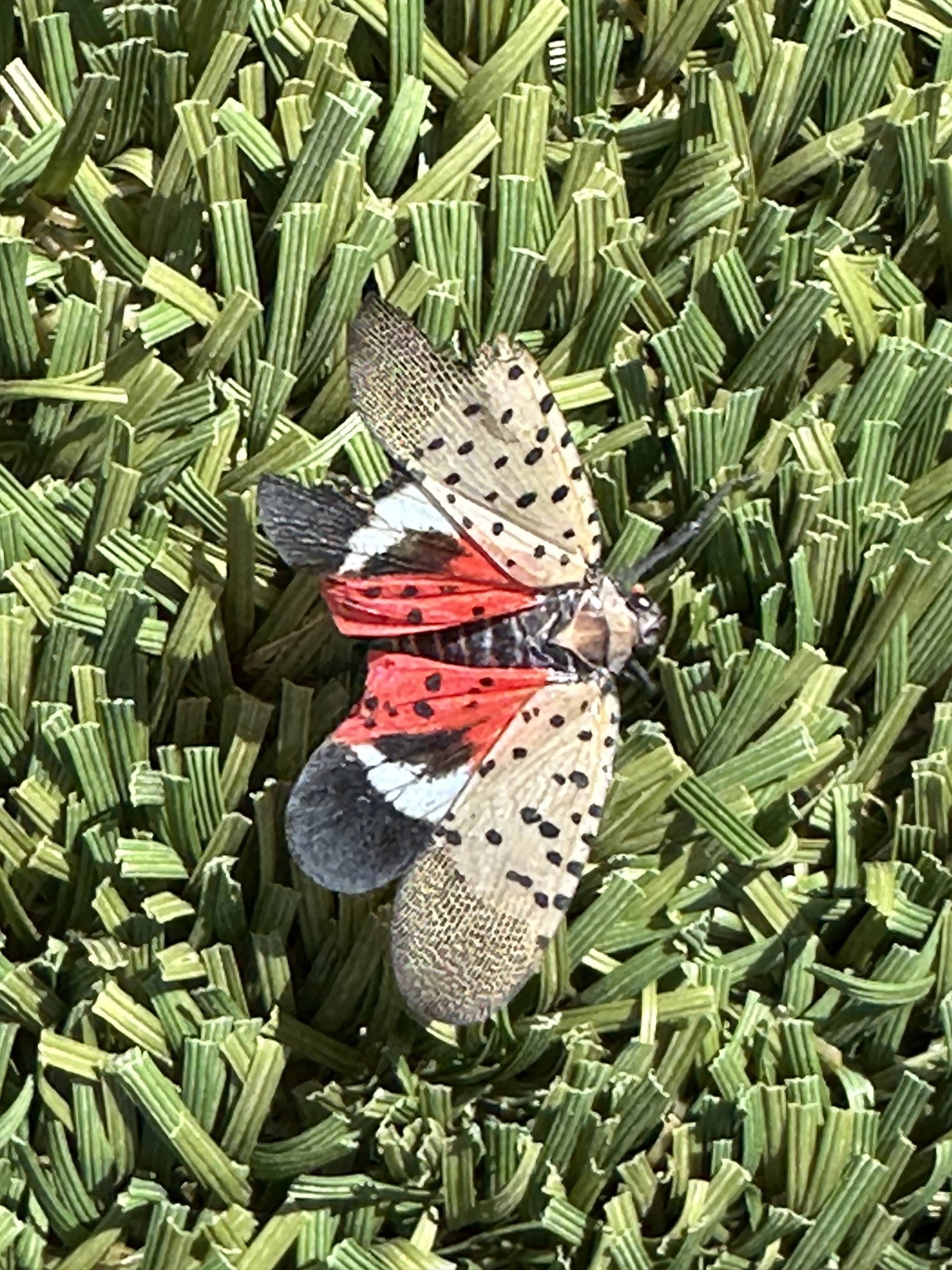
The New York State Department of Agriculture and Markets announced on Monday that the invasive spotted lanternfly has been discovered in additional locations across the state and asked state residents to continue scraping and destroying spotted lanternfly egg masses.
Spotted lanternfly is a nonnative insect that feeds on more than 100 plant species, including tree-of-heaven, and plants and crops, such as grapes, that are critical to New York’s agricultural economy, according to the Department of Agriculture and Markets.
“We have been working with our partners for years to contain SLF and minimize the spread of this invasive species, which can cause extensive damage to plants and crops that are critical to New York’s agricultural economy,” State Agriculture Commissioner Richard A. Ball said. “We are incredibly grateful for the help New Yorkers have provided in the last few years and urge residents to continue eliminating egg masses by scraping them off trees, structures and outdoor furnishings now that the cold weather is here. We’re optimistic that through education and continued collaboration with our partners and the public, we will be able to manage SLF and mitigate the impact to the grape growing industry in the years to come.”
State Department of Environmental Conservation Interim Commissioner Sean Mahar said: “The rapid spread of spotted lanternfly has highlighted the many invasive species challenges now facing the state and the critical role New Yorkers can play in helping State agencies and our partners identify threats and take actions to protect our natural resources. To address the spread of this invasive species, I encourage all residents to follow these tips for identifying spotted lanternfly egg masses and scraping them off to contain this species. By working together, we can all make a difference to manage this destructive invasive species on our natural and agricultural resources and the important economic benefits they provide.”
Spotted lanternfly was first detected in the United States in Pennsylvania in 2014. It has since been detected in 18 states including New York, where it was discovered in late summer 2020 on Staten Island. The species has continued to expand its range in New York State, including moving eastward in Suffolk County. In July, the department confirmed the presence of spotted lanternfly in Romulus, near the grape-growing region of the Finger Lakes. During the 2024 survey season state inspectors confirmed new populations in Geneva, Ontario County; Romulus, Seneca County; City of Schenectady, Schenectady County; and Cohoes, Albany County.
The department is urging any travelers leaving a spotted lanternfly-infested area to thoroughly inspect vehicles, luggage and gear, and all outdoor items for egg masses. If egg masses are found, travelers should destroy them by scraping them.
Identifying Spotted Lanternfly and Egg Masses
Adult SLF are approximately 1 inch long and half an inch wide at rest, with eye-catching wings. Adults are active from July to December and begin laying eggs in September.
Eggs are laid in one-inch-long segmented rows of up to about 50 eggs covered in a creamy-white, putty-like substance that becomes pinkish-gray as it dries. After a few weeks the covering turns a darker tan and starts to crack, resembling a splotch of mud. Depending on the substrate, egg masses can be difficult to see and may be laid in protected locations that are difficult to inspect thoroughly.
Scraping Egg Masses
Spotted lanternflies can lay their eggs on any number of surfaces, such as vehicles, stone, rusty metal, outdoor furniture, and firewood. Scrape egg masses off their surface using scraper cards, credit cards, or anything else that is hard, tapered, and flat. Kill the eggs by putting them into a resealable bag that contains rubbing alcohol or hand sanitizer and dispose of them in the solution to be assured they will not hatch. Each egg mass contains up to 50 eggs, so removing as many as possible can reduce the numbers that will hatch in the spring.
Impacts to New York Agriculture
Spotted lanternfly feeding can stress plants, making them vulnerable to disease and attacks from other insects. Spotted lanternflies also excrete large amounts of sticky “honeydew,” which attracts sooty molds that may interfere with plant photosynthesis, negatively affecting the growth and fruit yield of plants and negatively impacting agriculture and forest health.
The estimated total economic impact of invasive insects in the United States exceeds $70 billion per year, and if not contained, spotted lanternfly could have an impact to New York State of at least $300 million annually, mainly to the grape and wine industry, which ranks third in the country in production. Spotted lanternfly also has the potential to significantly hinder quality of life and recreational activities due to the honeydew and the swarms of insects it attracts.
Learn more on the department’s website at agriculture.ny.gov/spottedlanternfly.